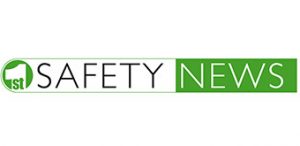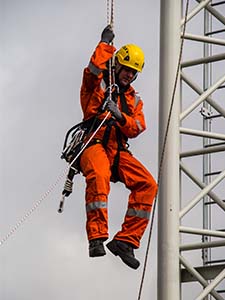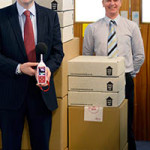Falls from height
Every year hundreds of accidents and incidents are recorded as a result of working at height activities. Falls from height are one of the biggest causes of workplace fatalities and major injuries in the U.K. and accounted for nearly three in ten fatal injuries to workers (41 out of 142) and almost half of fatal falls took place in construction (20 out of 41 fatal fall injuries) during 2014/15.
MRS Training & Rescue is a leading nationwide (ISO 9001:2000 approved) Health & Safety training provider to many businesses and industries throughout the U.K. They offer first class facilities to deliver a range of key height related training courses for people who are engaged in this safety critical work.
Work at height means work in any place where, if there were no precautions in place, a person could fall a distance liable to cause personal injury. Some work places are fairly
obvious, for example if you are working on a roof or ladder, others may be less obvious, for example if you could fall into a hole in the ground.
Employers and those in control of any work at height activity must make sure the work is properly planned, supervised and carried out safely. This includes using the right type of equipment for working at height and ensuring that any people engaged in the work are ‘competent’.
How do you decide if someone is ‘competent’ to work at height?
Employers should make sure that people have the necessary skills, knowledge and experience to perform the task, or, if they are being trained, that they work under the supervision of somebody competent to do it.
MRS Training & Rescue is a leading nationwide (ISO 9001:2000 approved) Health & Safety training provider to many businesses and industries throughout the U.K. They offer first class facilities to deliver a range of key height related training courses for people who are engaged in this safety critical work.
The company are approved by Renewable UK (RUK) and the Global Wind Organisation (GWO) for the range of courses available to the renewable industry. The training provided was recognised when the company recently won the ‘Green Energy Award’ for contribution to skills.
Training Centre Manager, Errol Parrish said ‘’we offer realistic training in a safe environment, where our facilities include a specially designed phentermine 37.5 mg training tower which provides our clients with the most realistic scenarios possible. We are engaging with organisations and key stakeholders to highlight the courses available to help to develop skills to enable people to work safely at height across all sectors”.
Working safely at height may not require the use of complex equipment and procedures as a suitable solution, take a sensible approach when considering precautions for work at height. There may be some low-risk situations where common sense tells you no particular precautions are necessary and the law recognises this.
There is a common misconception that ladders and stepladders are banned, but this is not the case. There are many situations where a ladder is the most suitable equipment for working at height.
Before working at height you must work through three simple steps:
- Avoid work at height where it is reasonably practicable to do so;
- Where work at height cannot be avoided, prevent falls using either an existing place of work that is already safe or the right type of equipment;
- Minimise the distance and consequences of a fall, by using the right type of equipment where the risk cannot be eliminated.
In the case of low-risk, such as using ladders for short duration periods, competence requirements may be no more than making sure employees receive instruction on how to use the equipment safely (eg how to tie a ladder properly) and appropriate training. Training often takes place on the job, it does not always take place in a classroom.
When a more technical level of competence is required, for example when working on towers, high platforms, roofs etc. with the use of working at height safety equipment, such as fall arrest and fall restraint devices, safety harnesses, work positioning lanyards, descenders and rescue equipment, then a more advanced appropriate level of training would be required.
Errol added ‘’MRS Training & Rescue realise that can no single solution is fit for all working at height situations, therefore we also offer bespoke courses by working closely with our clients to design and develop training to specifically to meet their needs, always with safety, quality and professionalism at the forefront of our minds’’.
You can find out more about MRS Training & Rescue by visiting their web site at www.mrsl.co.uk or by calling Errol on 01383 510766.







